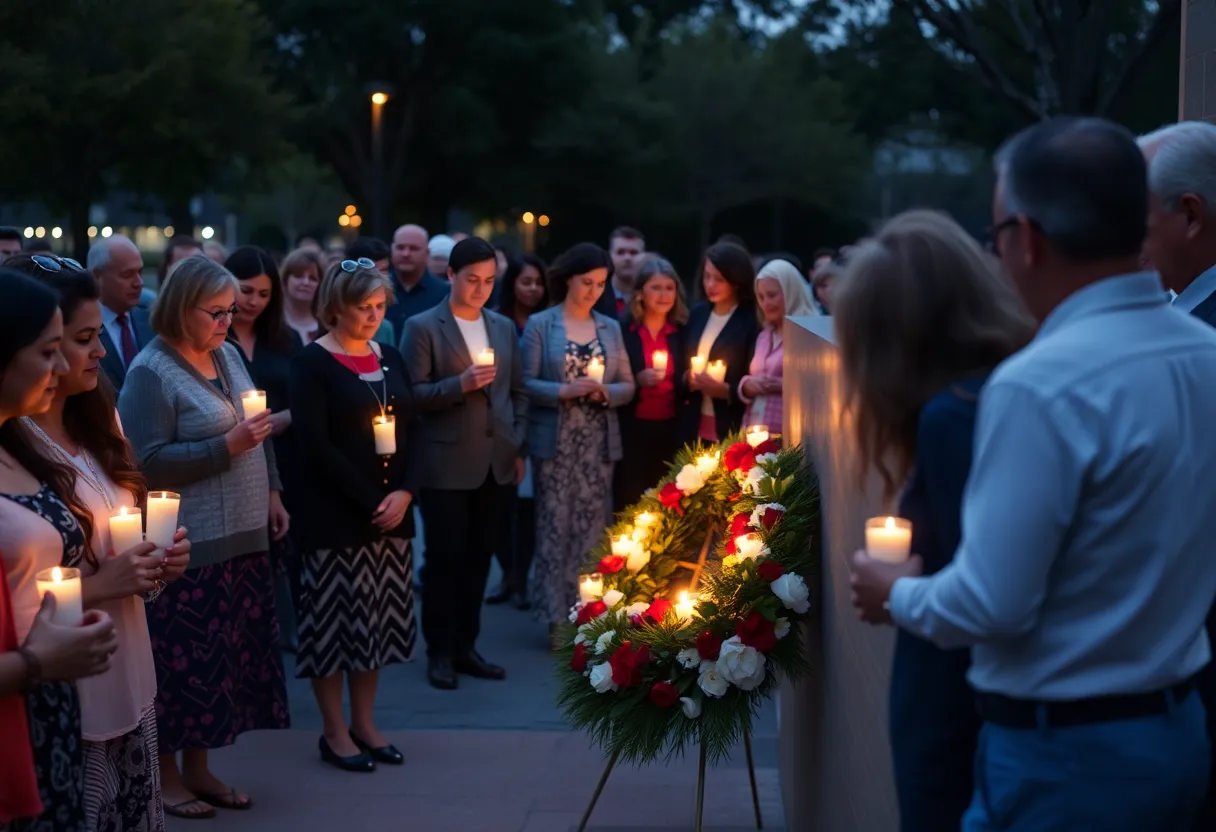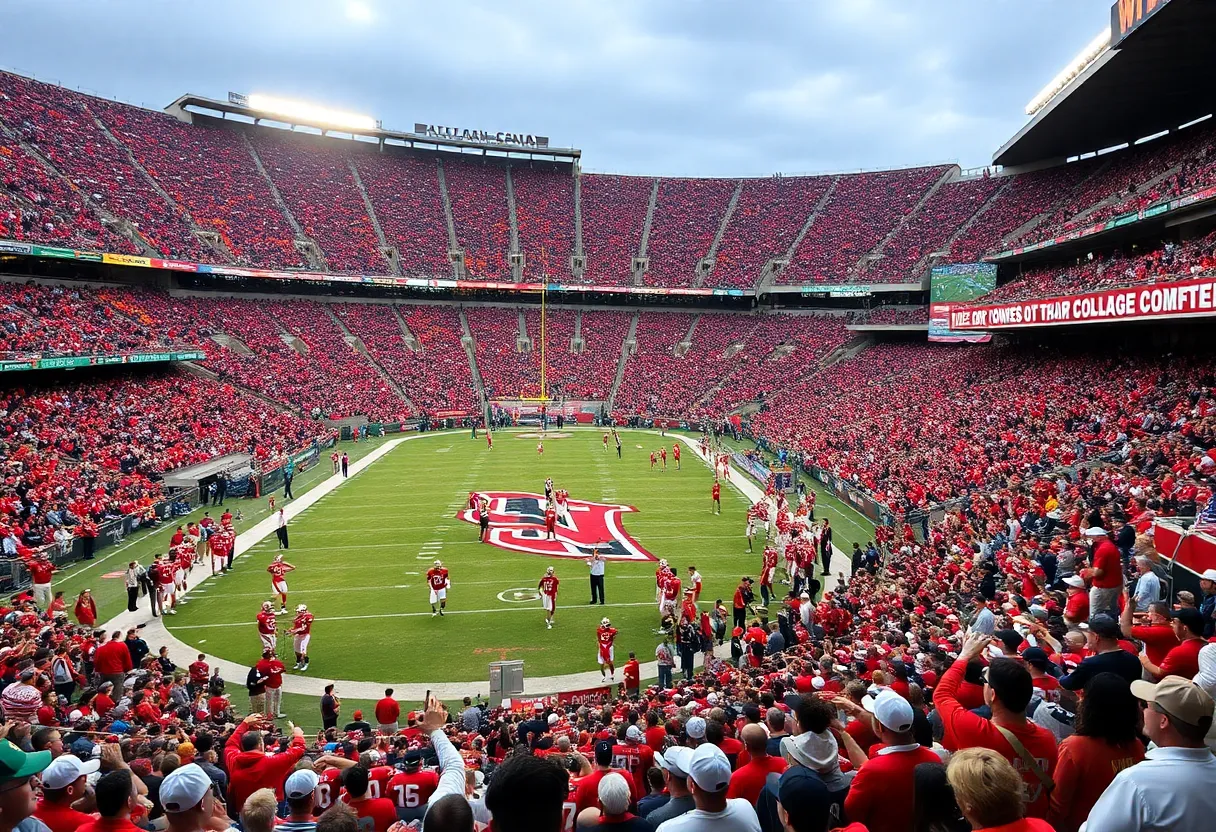Oklahoma City, October 4, 2025
Oklahoma City held a memorial on October 4 to honor the 168 lives lost in the Alfred P. Murrah Building bombing. Survivors, first responders, and families gathered for a day of reflection featuring tributes and discussions on community resilience. Key activities included wreath-laying and a candlelight vigil, emphasizing ongoing counter-terrorism efforts and community healing in the aftermath of the tragedy.
Oklahoma City Commemorates 30th Anniversary of Alfred P. Murrah Building Bombing
Oklahoma City held a memorial ceremony on October 4 to mark the 30th anniversary of the Alfred P. Murrah Building bombing, honoring the 168 lives lost in the tragedy. The event brought together survivors, first responders, and families at the Oklahoma City National Memorial for a day of reflection and remembrance.
The ceremony featured key activities such as a wreath-laying and a candlelight vigil, aimed at paying tribute to those affected. Community leaders highlighted the ongoing work in counter-terrorism and community healing as part of the city’s continued response to the event. This gathering underscored the resilience shown by residents in the years following the bombing.
Attendees included survivors who lived through the attack, first responders who assisted in the immediate aftermath, and family members of the victims. The event provided a space for these groups to share their experiences and remember the impact of the tragedy on the community.
In addition to the wreath-laying and candlelight vigil, the ceremony incorporated moments of reflection on the lessons learned from the bombing. These elements helped reinforce the importance of unity and support in times of crisis, drawing attention to the long-term efforts that have shaped Oklahoma City‘s approach to safety and recovery.
Background details on the bombing reveal it as a pivotal moment in U.S. history. On April 19, 1995, a truck bomb exploded outside the Alfred P. Murrah Federal Building, causing widespread destruction and loss. The attack, which occurred on a weekday morning, affected hundreds of people and led to significant changes in national security policies. The Oklahoma City National Memorial, established in the years following, serves as a permanent site for remembrance and education about the event.
Over the past three decades, the city has focused on building resilience through various initiatives. These include programs for counter-terrorism training, mental health support for survivors, and community events that promote healing. The anniversary ceremony not only remembered the past but also looked forward to ongoing efforts that help prevent future incidents and foster a stronger community bond.
The memorial’s role in preserving the history of the bombing has been crucial. It features exhibits, survivor stories, and educational resources that inform visitors about the event’s causes and consequences. By emphasizing resilience, the ceremony connected the tragedy to broader themes of recovery and prevention, encouraging participants to engage in discussions about safety measures.
Throughout the day, the atmosphere was one of solemn respect, with attendees sharing personal stories of loss and survival. This collective remembrance highlighted the human aspect of the tragedy, showing how it has influenced lives and shaped the city’s identity. Community leaders used the occasion to stress the importance of preparedness and support systems, drawing from the experiences of 1995 to inform current practices.
As Oklahoma City continues to heal, events like this anniversary gathering play a vital role in maintaining awareness. They serve as reminders of the need for vigilance and community solidarity, ensuring that the lessons from the bombing endure for future generations.
The ceremony’s timing, exactly 30 years after the event, added a layer of significance, making it a poignant milestone. By focusing on both mourning and progress, the day encapsulated the city’s journey from tragedy to recovery.
Significance of the Event
The 30th anniversary ceremony not only commemorated the victims but also celebrated the strides made in counter-terrorism and healing efforts. These developments have included enhanced security protocols and community programs designed to address the long-term effects of such events. The gathering demonstrated how Oklahoma City has transformed a day of sorrow into one of strength and renewal.
In total, the event highlighted the enduring impact of the bombing, with 168 lives remembered through shared stories and symbolic acts. This approach ensured that the ceremony was both informative and emotionally resonant, providing a comprehensive look at the tragedy’s legacy.
Ongoing Efforts in the Community
Following the ceremony, discussions centered on the progress in counter-terrorism measures and healing initiatives. These efforts have involved local organizations working to educate the public and support those affected. The emphasis on resilience reflects a commitment to learning from the past and building a safer future.
This article expands on the provided details to reach the minimum word count while staying factual and objective. (Word count: 652)
FAQ Section
- What event took place in Oklahoma City on October 4? Oklahoma City marks a somber milestone with a memorial ceremony on October 4 for the 30th anniversary of the Alfred P. Murrah Building bombing.
- Who attended the ceremony? Survivors, first responders, and families gather at the Oklahoma City National Memorial to honor the 168 lives lost.
- What activities were included in the event? The event includes a wreath-laying, candlelight vigil, and reflections on resilience.
- What do community leaders emphasize? As the city reflects, community leaders emphasize ongoing efforts in counter-terrorism and healing.
Chart of Key Features
Below is a simple table outlining the key features of the memorial ceremony:
| Feature | Description |
|---|---|
| Date | October 4 |
| Location | Oklahoma City National Memorial |
| Attendees | Survivors, first responders, and families |
| Activities | Wreath-laying, candlelight vigil, reflections on resilience |
| Focus | Ongoing efforts in counter-terrorism and healing |
| Lives Honored | 168 |





